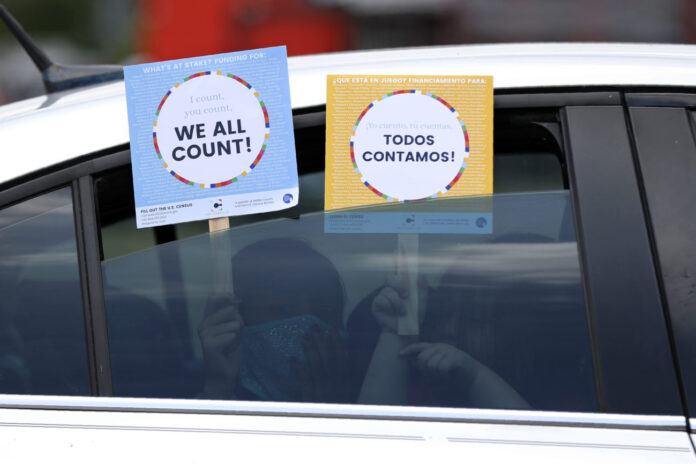HARLINGEN — The Rio Grande Valley is putting its imagination to work to ensure the Census 2020 count is as thorough as can be.
But the Valley is lagging behind the rest of Texas, which ranks a lowly No. 40 among states in the self-response rate to the census which began way back in April.
The Texas self-response rate as of last Sunday was 56.7 percent of households reporting. But Cameron County (44.5 percent), Hidalgo County (46.0 percent), Willacy County (34.5 percent) and Starr County (37.8 percent), are all far behind.
“ Cameron County, Hidalgo County, they’ve been working really hard in real creative ways, even having their caravans where they’re going out into the colonias and making sure that people see the census messaging and are aware that data collection is still happening,” said Lila Valencia, senior demographer with the Texas Demographic Center.
“ I know they’re having loteria events, I think it’s called Censo Lote, where they’re just having raffles and games and trying to encourage people,” she added. “I heard also that some of the utilities are offering discounts on water bills and things of that nature to encourage people to respond to the census.”
At stake for one of the poorest regions of the country are hundreds of millions — even billions — of federal dollars which are allocated on the basis of population.
The biggest streams, critical to many residents of the Valley, are Medicaid, federal direct student loans, SNAP benefits, Medicare and highway funding.
Census 2020 will help determine how $1.5 trillion in federal spending is distributed nationally, with more than $100 billion going to Texas. It will also determine how many congressional seats each state gets as state legislatures use Census 2020 to redistrict as per federal law.
“ In fiscal year 2017, it was $101 billion,” Valencia said.
The problem is, each Valley resident who goes uncounted can cost a city as much as $1,500 a year per person, or $15,000 over the course of a decade.
Once lost, that money is never recovered.
“ I think the commitment and the creativity that’s come out of the Valley is very commendable,” Valencia said. “I think they’re working very, very hard.
“ I also know that they realize the importance in terms of federal funding but also in terms of representation,” she added. “When the Texas Demographic Center was traveling with the house redistricting committee, we had two stops there in the Rio Grande Valley, in Harlingen and Edinburg, and I remember how the county judges spoke and said, you have our numbers wrong. We know we are over one million and of course that’s based on the undercount that happened in 2010.”
Another factor complicating the Census 2020 count is that the robust population growth in the Valley dating back four decades is slowing, making each individual not counted even more important.
Since 1980, the Valley population more than doubled, from just under 600,000 people to almost 1.4 million. While it is still increasing, the rate at which that is occurring has reached a plateau.
In Cameron, Hidalgo and Starr counties, the percentage increase in 2017-18 dropped to under 1 percent. In Willacy County, the population actually declined.
Valencia thinks what the Valley needs is more outreach to convince residents of the importance of filling out the census questionnaire, either the mail-in version or the online version. Residents have until Oct. 31 to self-report.
“ I think the one component that’s missing that is really very critical to the effort in reaching out any sort of message to people in the Valley is that one-on-one interaction, that face- to-face interaction with people where they actually get to hear from someone they know and they trust about why the census is important,” she said.
Yet even Valencia concedes this retail counting — census bureau enumerators will begin door-to-door canvassing on Aug. 11 — might not be enough to overcome the disruption caused by COVID-19.
“ Nobody had any idea we would be here, and a lot of great plans had to be put on the back burner,” she said. “Hopefully, we can get those back up and running soon.”
Self-response rates by city
BROWNSVILLE: 50.6 percent
HARLINGEN: 48.6 percent
MCALLEN: 53.2 percent
EDINBURG: 54.1 percent
WESLACO: 45.9 percent
Note: Numbers are percentages of known households self-responding to Census 2020 in each city as of July 5,




